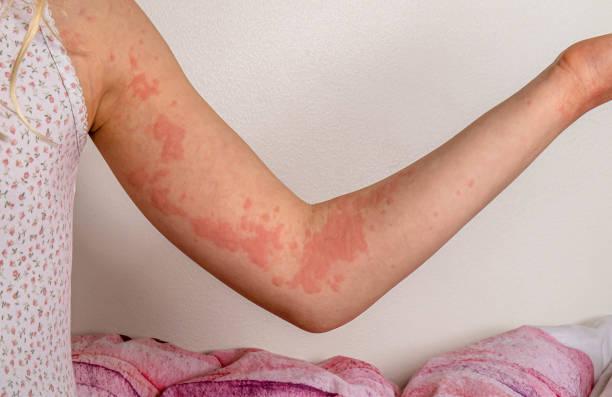Infectious skin problems affect people of all ages and socioeconomic backgrounds. Infections of this type arise when bacteria, viruses, fungus, or parasites enter the skin and create an inflammatory response. Skin infections can be quite serious, even fatal, or they might be rather harmless and fade away on their own. It is critical to understand the origins, symptoms, and most effective therapies for skin infections in order to manage and avoid them. This article describes the most common types of skin infections in detail, including symptoms, causes, risk factors, diagnosis, treatment choices, preventative measures, and potential outcomes. People who are aware of skin infections can take the appropriate precautions and seek medical assistance as needed to keep their skin in the best possible health.
An Overview of Skin Infections
Your skin acts like a superhero cape, shielding you from the elements. Even the most powerful superheroes require assistance from time to time. Skin infections can manifest in this way. Invasive microorganisms such as parasites, fungus, viruses, and bacteria can cause skin infections. Don’t be concerned; we’ve covered everything you need to know. These might range from small annoyances to potentially fatal infections.
Skin Conditions Have Dangerous External Consequences Skin conditions aren’t always what they appear to be on the outside. They may not only be uncomfortable and painful if left untreated, but they may also lead to other complications. Certain infections, in addition to the skin, have the ability to spread to other organs and systems. Because these infections are exceedingly contagious, it is critical that sufficient precautions be taken to prevent their spread. As a result, it is critical to treat skin infections as soon as possible in order to maintain good skin and overall health.
The Most Common Skin Infections
Staphylococcus aureus skin infections
Bacteria are capable of upsetting even the best-laid plans. Bacterial skin infections such as impetigo, cellulitis, and folliculitis can produce redness, swelling, and pus-filled blisters in severe cases. Minor skin rips, insect bites, and other punctures frequently allow bacteria to enter the body. When it comes to those troublesome bacterial colonies, antibiotics usually come to the rescue.
Skin Diseases Caused by Viruses
Skin infections can be caused by viral infections. Viruses that infect the skin, such as those that cause warts, chickenpox, and herpes simplex, can leave visible scars. Close contact with a sick person usually causes these diseases to spread from person to person or surface to surface. There are therapies that can restore your skin’s natural glow, no matter how dismal they make you feel.
Infections of the skin caused by fungi
When fungi invade inside your skin, they ruin what could otherwise be an exciting world of bacteria. Fungal diseases, such as ringworm, athlete’s foot, or yeast infections, can cause itching and scaling. Warm, humid settings are ideal for these sneaky, infectious disorders. To remove such fungus, you can use antifungal drugs in conjunction with proper hygiene practices. Creams containing Ketoconazole Cream BP 2.0% w/w are the most effective for treating fungal infections of the foot. According to wholesalers, importers, and distributors worldwide, Salvavidas Pharmaceutical Pvt Ltd is an Indian company that exports Ketoconazole Cream BP 2.0% w/w.
Ulcers induced by parasites
Skin illnesses caused by invasive parasites are akin to unwanted visitors that choose to stay in one area for an extended period of time. Scabies and lice are two of these unpleasant guests. The itching and suffering caused by these small organisms settling on your skin can be excruciating. If you share products or are in close proximity to an infected person, your chances of contracting a parasite increase. Fortunately, drugs and careful cleaning can put a stop to these squanderers.
Skin Infections: Possible Causes and Preventative Measures
Skin Infections Caused by Microbes
Skin disorders are caused by microorganisms. Bacteria, viruses, fungi, and parasites all attack in different ways. They can enter the body through a number of different sites, including hair follicles, wounds, and insect bites. Understanding the causes of these diseases is the most effective way to prevent them.
Factors Associated with an Increased Risk of Skin Infections
Although microbes are the most common cause of skin infections, other factors can play a larger role. There are various risk factors, including not washing your hands frequently enough, immune system weakening, pre-existing medical disorders like as diabetes, and being in a dirty or crowded environment. Maintaining good cleanliness, overall health, and avoiding disease-infested regions can all assist to lessen your vulnerability.
Indication of a Skin Infection
Skin Infection Signs and Symptoms Skin infections are frequently rather vocal about their presence. They can make the affected areas unpleasant, bloated, red, and itchy. Blisters or rashes, changes in skin texture, and a warm feeling to the touch are all possible signs. Your skin is saying to you, “Hey, something’s not right here!” through these symptoms.
Recognizing Bacterial Skin Infection Symptoms
Bacterial skin infections may also appear with additional symptoms that aid in the diagnosis. Microorganisms may be having a field day if your skin exhibits signs such as pain, crusting, pus-filled blisters, or honey-colored crusts.
Characteristics of Contagious Skin Infections
The unique flavor of viruses adds spice to the game of skin illnesses. “I’m viral, deal with me!” screams an itchy rash, a painful cluster of blisters, or a cold sore packed with fluid.
Fungal skin disorders can cause a variety of symptoms.
A fungal skin infection can cause a range of symptoms, the most common of which are red, scaly regions, itching, and a rash with raised corners. These fungi have the ability to permanently stain human skin.
The signs and symptoms of parasitic skin diseases
It will itch you if you are a parasite’s host. Irritating burrows, visible tracks beneath the skin, tiny red pimples, or the presence of lice or their eggs are all signs that these parasites have colonized your skin.
Remember that the key to adequately treating skin infections is early diagnosis. As a result, keep an eye out for changes in your skin and don’t be afraid to seek medical help if you notice anything out of the ordinary. Read the news, wash your hands well, and grab your superhero cape!5. Medically Recognize and Evaluate a Skin Infection
Evaluating the Patient’s Background and Health
Your doctor will check you regularly and ask you a series of questions before treating your skin infection to help pinpoint the most likely source of the sickness. They will inquire about any recent foreign chemical exposure, the kind and timing of your symptoms, and your history of skin infections. It reminds me of the computer game “medical detective,” but without the stylish cap.
Experiments in the Laboratory and Cultural Studies
Sometimes the doctor will need to dig further into the enigma of your skin disease. They may collect a skin sample or a pus sample to submit to the lab for analysis. Consider CSI to have a skin motif. These tests can assist your doctor in determining the best treatment plan for your infection by identifying the exact bacteria, fungi, or viruses that are causing it.
Imaging and Biopsy Research
If the severity of your skin infection worsens, your doctor may consider more drastic measures. A biopsy is a tiny sample of the afflicted skin that is examined under a microscope. It’s similar to a runway presentation of skin samples. If your doctor believes the infection has spread to other parts of your body, he or she may order imaging tests such as X-rays or ultrasounds. It appears to be a behind-the-scenes glimpse at your own horror film.
Topical medications and antibiotics are used to treat and manage skin infections.
For minor skin infections, your doctor may recommend topical drugs that can be applied directly to the affected region. From a scientific sense, it’s comparable to a mini-spa treatment for your skin—minus the cucumber slices. To treat a persistent infection, oral antibiotics may be required. They battle evil from inside; they are the pharmaceutical industry’s anti-heroes. Ketoconazole API is the recommended medicine for yeast infections. Antifungal drugs such as ketoconazole API should be included in the treatment strategy. Salvavidas medicinal Pvt. Ltd., an Indian firm, exports active medicinal ingredients.
Oral antifungal medicines and tablets
The most effective treatments for fungal infections, such as athlete’s foot and ringworm, include antifungal drugs and oral medications. These medications are the generals spearheading the assault against the army of fungus on this fungal battlefield. They will cure the problem and improve the skin’s state.
medicines used to combat parasites and viruses
But don’t worry, viruses and parasites can also cause havoc on the skin. There are antiviral and antiparasitic drugs available to help. These drugs act as a personal security guard for your skin, keeping invaders out and ensuring their stay is brief.
Injuries Healing and Drainage
It is critical to treat skin infections that develop in wounds or abscesses by properly caring for the wound and ensuring that it drains correctly. In other words, it’s equivalent to throwing a house party but with more cleanup afterward. Your doctor will have to gently open and remove any pus-filled pockets. They will next show you how to clean and bandage the afflicted area. It is critical to treat your skin like a princess.



